CNA vs. Unlicensed Assistive Personnel: Key Differences in Roles, Training, and Career Paths (2025 Guide)
Introduction
In today’s growing healthcare industry, the demand for qualified professionals continues to increase. Among the most essential roles are Certified Nursing Assistants (CNAs) and Unlicensed Assistive Personnel (UAPs). While both play an important part in patient care, there are key differences in certification, responsibilities, and career opportunities for CNA vs Unlicensed Assistive Personnel.
This guide will explore CNA certification requirements, UAP responsibilities, training pathways, and career growth in 2025 and beyond. We’ll also highlight how enrolling in a CNA Online Course can set you on the right track to becoming a certified professional in healthcare.
Why CNA Certification Is Essential
Legal Requirements for CNAs
Becoming a CNA requires completing a state-approved certification program. Certification isn’t just optional—it’s legally required for anyone performing official CNA duties. Without certification, your role is limited, and you may not have the authority to perform essential tasks in patient care.
Patient Safety and Quality Care
Certified CNAs are trained to follow strict healthcare protocols, ensuring the highest level of patient safety, infection control, and ethical care. This specialized training separates CNAs from unlicensed staff members.
Career Advancement Opportunities
Certification doesn’t just open doors to entry-level jobs—it also lays the foundation for career growth. Many CNAs later advance into positions such as Licensed Practical Nurse (LPN) or Registered Nurse (RN), leveraging their CNA experience for higher pay and greater responsibilities.
Tip: Get started with a CNA Online Certification Program to fast-track your career.
CNA vs. Unlicensed Assistive Personnel (UAP)
Understanding the differences between these two roles is crucial for anyone considering a career in healthcare.
Certified Nursing Assistants (CNAs)
-
Responsibilities: Provide direct patient care including feeding, bathing, mobility assistance, measuring vital signs, and ensuring patient safety.
-
Training: Requires completion of a state-approved training program with both classroom and hands-on clinical practice.
-
Certification: Must pass a written knowledge exam and a clinical skills exam to become licensed and included in the state nursing aide registry.
Unlicensed Assistive Personnel (UAPs)
-
Responsibilities: Provide supportive care tasks such as helping with meals, toileting, or basic patient comfort. Work is performed under direct supervision of licensed nurses.
-
Training: Often less formal. May be employer-based or consist of short non-accredited courses.
-
Certification: No state certification is required, which limits the scope of duties and potential career progression.
Key Difference: CNAs have legal recognition, certification, and broader responsibilities, while UAPs are limited to supportive care roles without advancement opportunities.
Educational Pathways for CNAs
Basic CNA Training
Most CNA programs last 4 to 16 weeks, combining classroom instruction with clinical rotations. Students learn:
-
Anatomy and physiology basics
-
Infection control procedures
-
Ethical and legal aspects of patient care
-
Practical nursing skills like mobility assistance and vital sign monitoring
Where to Get CNA Training
-
Community colleges
-
Vocational schools
-
Hospitals and healthcare training centers
-
Online programs such as the CNA Online Course offered by Nursing Certifications Online
Specialized CNA Certifications
After certification, CNAs can pursue additional specialties to increase employability and salary:
-
Certified Geriatric Nursing Assistant (CGNA): Focus on elder care
-
Certified Dementia Practitioner (CDP): Specialized dementia care
-
Restorative Nursing Assistant (RNA): Rehabilitation-focused care
Practical Skills Every CNA Must Master
-
Hygiene & Patient Care: Safely trimming nails, bathing patients, and ensuring dignity during daily activities.
-
Oral Care for Unconscious Patients: Using foam swabs or soft brushes to maintain oral hygiene without risk.
-
Mobility Assistance: Proper use of gait belts, repositioning patients, and wheelchair transfers.
-
Infection Control: Correct use of PPE, handwashing, and maintaining clean environments.
These skills not only maintain health but also contribute to patient comfort and emotional well-being—a critical aspect of CNA work.
The CNA Certification Process
Steps to Becoming a CNA
-
Enroll in Training: Programs such as the CNA Online Course provide affordable and flexible learning.
-
Pass the State Exam: Includes a written test and a hands-on clinical skills evaluation.
-
Get Licensed: Successful candidates are added to the state’s nurse aide registry.
Renewal and Recertification
Most states require CNAs to renew certification every 2 years. Renewal typically requires:
-
Proof of working a set number of hours
-
Continuing education credits
-
Retaking exams if certification lapses
Free vs. Paid CNA Training Programs
Free CNA Courses
-
May offer limited instruction
-
Good for beginners exploring the field
-
Often lack full exam preparation and certification pathways
Paid CNA Online Courses
-
Structured, state-specific training
-
Access to practice tests and exam prep
-
Certification support, CPR/BFA training included
-
Faster pathway to employment
If your goal is to become a licensed CNA, a CNA Online Course offers the best value for exam readiness and career success.
Career Opportunities for CNAs in 2025
With an aging population and expanding healthcare needs, the job market for CNAs is expected to grow significantly through 2030.
Work Settings for CNAs
-
Hospitals
-
Nursing homes
-
Rehabilitation centers
-
Home healthcare services
-
Schools and corporate health programs
Career Growth Pathways
Becoming a CNA can be the first step toward:
-
Licensed Practical Nurse (LPN)
-
Registered Nurse (RN)
-
Specialized Care Roles (geriatrics, dementia care, rehabilitation)
Nursing Certifications Online: Your Partner in CNA Success
At Nursing Certifications Online, you’ll find:
-
Comprehensive CNA Training Programs tailored for certification success
-
Community support through forums and resources
-
Ongoing career guidance to help you transition into healthcare roles confidently
For affordable, flexible, and high-quality training, explore the CNA Online Course today.
Final Thoughts
Choosing between working as a CNA or an unlicensed assistive personnel depends on your career goals. If you want job security, growth opportunities, and professional recognition, becoming a CNA is the clear choice.
With structured training, certification, and career support, you can enter the healthcare field prepared for success in 2025 and beyond. Start your journey today with the CNA Online Course and take the first step toward a rewarding and impactful career.

